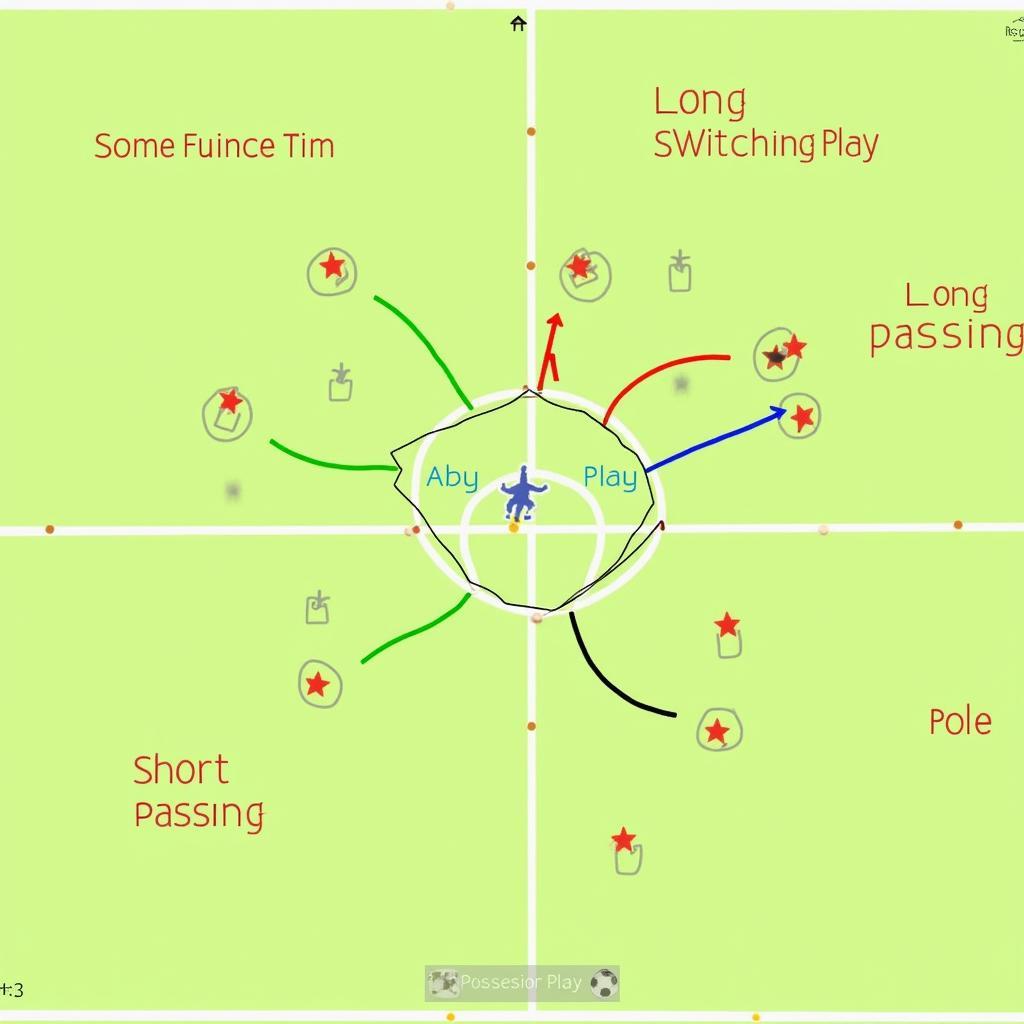Understanding Central Tent Diagrams
October 31, 2024Central Tent Diagrams are a powerful tool for visualizing and analyzing complex relationships, particularly in fields like football tactics, business strategy, and even social networks. They allow you to break down a central concept or idea into its constituent parts, revealing connections and hierarchies that might otherwise be difficult to grasp. Let’s explore how these diagrams work and how they can be applied in various contexts.
Deconstructing the Central Tent: Key Components and Structure
Central tent diagrams are essentially hierarchical structures with a central theme, represented by the “tent,” at the top. This central theme is then supported by a series of “poles,” which represent the key supporting elements or sub-themes. From these poles, further branches can extend, representing specific details, examples, or sub-sub-themes. This structure allows for a clear and organized representation of complex information, making it easier to identify key relationships and dependencies.
The real power of central tent diagrams lies in their ability to visually represent complex interconnections. By clearly labeling each element and using connecting lines to illustrate relationships, you can create a powerful visual representation of how different parts of a system interact and contribute to the overall whole. This is particularly useful when analyzing systems with multiple layers of interconnected elements, like a football team’s formation or a company’s organizational structure. For instance, when planning a match, I might use a central tent diagram to visualize our attacking strategy, with the central tent being “Goal Scoring.” The poles would represent different avenues of attack, such as “Wing Play,” “Through Balls,” and “Set Pieces.”
Practical Applications of Central Tent Diagrams: From Football to Business
While the concept of a central tent diagram might seem abstract, its applications are incredibly diverse. In the world of football, for instance, these diagrams can be used to analyze opponent formations, plan set pieces, or even visualize player movement and passing patterns. They can also be used in business to map out organizational structures, develop marketing strategies, or analyze competitive landscapes.
Imagine you’re a business owner trying to understand customer behavior. You could use a central tent diagram with “Customer Satisfaction” at the center. The supporting poles might include “Product Quality,” “Customer Service,” and “Pricing.” Each of these poles could then have further branches detailing specific aspects, like “Durability,” “Responsiveness,” and “Competitiveness.” This allows for a detailed, visual understanding of what drives customer satisfaction.
How Central Tent Diagrams Enhance Strategic Thinking and Problem-Solving
Central tent diagrams not only help organize information but also encourage strategic thinking and problem-solving. By visually representing the relationships between different elements, these diagrams can reveal hidden connections and potential bottlenecks. This can lead to more effective decision-making and a better understanding of the system as a whole. For instance, in football, if a central tent diagram reveals a weakness in our wing play, we can adjust our training and tactics to address that specific area.
Dr. Johan Cruyff, a legendary figure in football, once said, “Football is simple, but it is difficult to play simple.” Central tent diagrams, in their simplicity, can help us unpack the complexities of the game, enabling a clearer understanding of the various interacting elements.
 Central Tent Diagram illustrating Football Passing Patterns
Central Tent Diagram illustrating Football Passing Patterns
Conclusion: Unlocking the Power of Visual Thinking with Central Tent Diagrams
Central tent diagrams are a valuable tool for anyone looking to better understand and analyze complex systems. From football tactics to business strategies, these diagrams offer a powerful way to visually represent information, identify key relationships, and enhance strategic thinking. By using central tent diagrams, you can gain a deeper understanding of how different parts of a system interact and contribute to the overall whole.
FAQ
-
What is the main purpose of a central tent diagram?
To visually represent hierarchical structures and complex relationships. -
How do central tent diagrams help in strategic thinking?
By revealing hidden connections and potential bottlenecks. -
Can central tent diagrams be used outside of business and football?
Yes, they can be applied to any field involving complex systems. -
What is the central theme of a central tent diagram represented by?
The “tent.” -
What do the “poles” in a central tent diagram represent?
Key supporting elements or sub-themes. -
What are some examples of how central tent diagrams can be used in football?
Analyzing opponent formations, planning set pieces, visualizing player movement. -
How can central tent diagrams help improve customer satisfaction?
By visualizing the factors that contribute to it and identifying areas for improvement.
Contact Information
For assistance, please contact us:
Phone Number: 0963418788
Email: [email protected]
Address: 2M4H+PMH, Phường Nghĩa Thành, Gia Nghĩa, Đắk Nông, Việt Nam
We have a 24/7 customer support team.